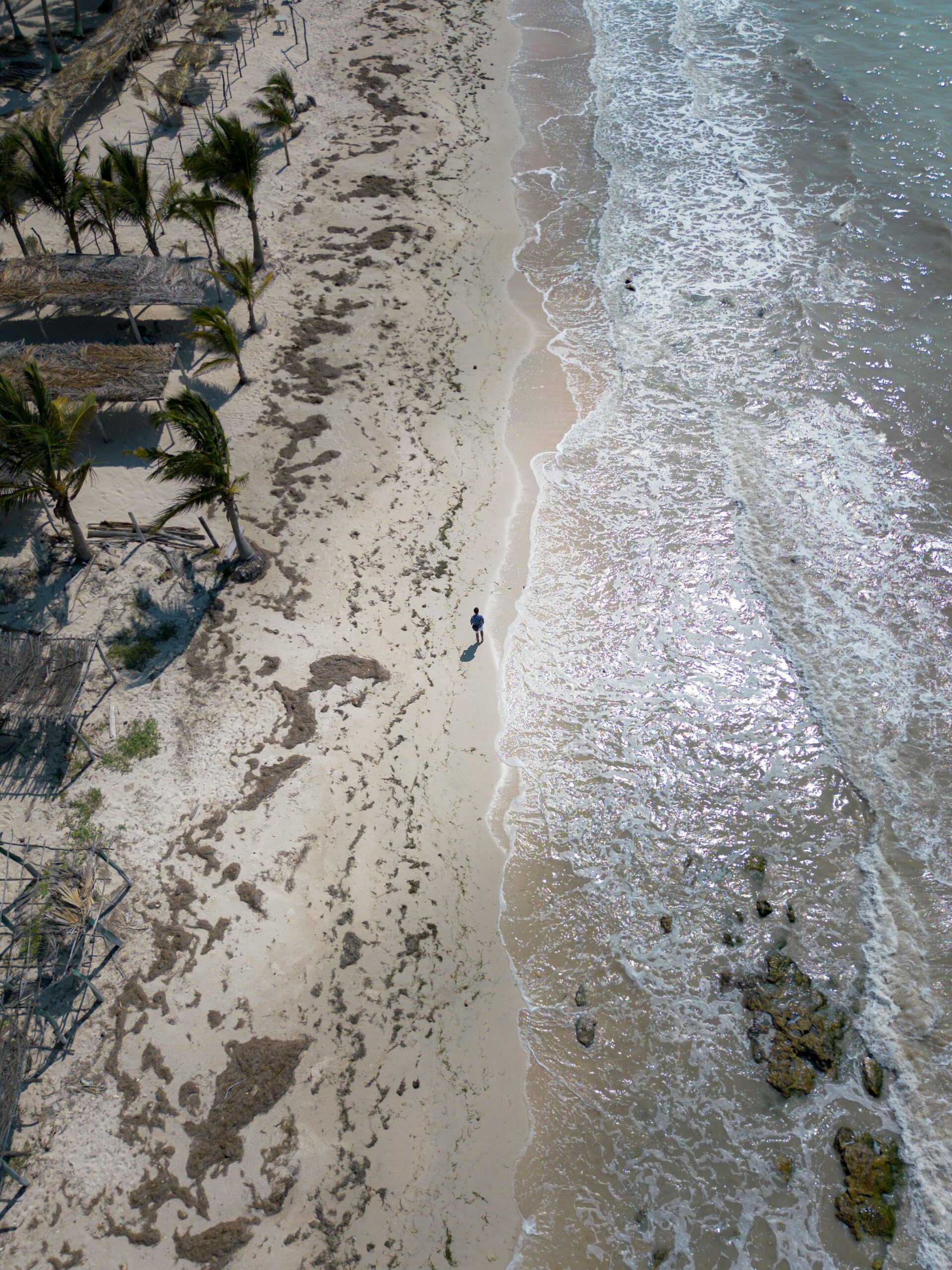Tides at Duxbury Beach: Discover Secrets of Nature’s Rhythm unveils the captivating dance between land and sea along one of Massachusetts’ most picturesque coastlines. Ever wondered how tides influence Duxbury Beach’s unique ecosystem or why this natural phenomenon is so vital for local wildlife? This article dives deep into the fascinating world of Duxbury Beach tides, exploring the hidden secrets of nature’s rhythm that shape the shoreline with every rise and fall. You’ll be amazed by how these tidal patterns affect everything from sandy shores to vibrant marine life, creating an ever-changing landscape that’s both beautiful and essential.
Understanding the science behind tides at Duxbury Beach is not only intriguing but also crucial for visitors and locals alike. Did you know that the tidal cycles here are influenced by the gravitational pull of the moon and sun, causing predictable yet dynamic changes in water levels? These fluctuations expose tidal pools teeming with sea creatures and reveal vast stretches of sand perfect for beachcombing adventures. Whether you’re a curious nature lover or a seasoned beachgoer, learning about the timing and impact of Duxbury tidal movements can transform your experience, allowing you to witness nature’s power up close.
So, what makes the tides at Duxbury Beach truly special, and how can understanding them enrich your visit? From uncovering the secrets of intertidal zones to spotting rare coastal wildlife during low tide, this guide offers invaluable insights that will deepen your appreciation for this stunning natural setting. Ready to unlock the mysteries of nature’s rhythm? Keep reading to discover how the tides at Duxbury Beach create a living, breathing landscape full of wonder and endless discovery.
How Do Tides at Duxbury Beach Influence Coastal Wildlife? Unveiling Nature’s Hidden Patterns
Tides at Duxbury Beach are more than just the rise and fall of the ocean; they shape the very way life persists along this unique coastal environment. If you ever wonder how the rhythms of the sea influence the creatures and plants that call Duxbury Beach home, you’re not alone. The tides reveal secrets of nature’s pulse, creating patterns that have been guiding wildlife for centuries, maybe even longer. But how exactly do these tides affect the coastal wildlife? Let’s dive into this fascinating interplay between water and life.
What Makes Duxbury Beach’s Tides Special?
Duxbury Beach, located on the Massachusetts coast near Boston, experiences typical semidiurnal tides – meaning there are usually two high tides and two low tides each day. These tides are driven by the gravitational pull of the moon and the sun on Earth’s oceans. But local geography, wind, and weather also play a role, causing slight variations in the timing and height of the tides.
Because Duxbury Beach is a barrier beach, it acts as a shield against the Atlantic Ocean’s waves, creating calm, shallow waters and mudflats at low tide. These conditions are perfect for many species of coastal wildlife, which depend on the changing tides to feed, breed, and shelter.
The Rhythms of Tides and Their Impact on Wildlife
The shifting water levels at Duxbury Beach create a dynamic environment. Different animals and plants have adapted to live within this ever-changing habitat. The tides create a cyclical pattern that affects:
- Feeding Times: Many shorebirds, fish, and invertebrates rely on low tides to expose mudflats and tidal pools where they find food.
- Breeding and Nesting: Some species time their breeding cycles with tides to avoid flooding or to take advantage of food availability.
- Migration Patterns: Certain migratory birds use tidal schedules to decide when to stopover for rest and nourishment.
Key Species Influenced by Tides at Duxbury Beach
Here is a list of notable wildlife affected by the tides at Duxbury Beach:
- Sandpipers and Plovers: These small shorebirds forage along the exposed sand and mudflats during low tide.
- Horseshoe Crabs: They come ashore during high tides to spawn, their eggs serving as vital nutrition for migrating birds.
- Clams and Mussels: Buried beneath the sand, these bivalves filter water during high tides and remain safe during low tides.
- Seagrasses: These underwater plants thrive in shallow waters affected by tides, providing habitat and oxygen for marine life.
Historical Context: Tides and Human Interaction
For centuries, local communities near Duxbury Beach have observed and used tidal patterns for fishing, shellfishing, and recreation. Indigenous peoples once relied on the predictable tides for gathering shellfish and understanding seasonal changes. Even today, fishermen and conservationists watch the tides closely, because they know how vital these cycles are to the health of coastal ecosystems.
Practical Examples of Tidal Influence on Wildlife Behaviour
- During spring tides (when the difference between high and low tide is greatest), mudflats are more exposed, allowing shorebirds to feed extensively.
- At neap tides (smaller tidal differences), less habitat is exposed, forcing animals to adjust their behaviour or move elsewhere.
- After storms, tides can shift sediment and reshape habitats, impacting how and where animals can live.
Comparison: Duxbury Beach vs Other Coastal Areas
| Feature | Duxbury Beach | Typical Rocky Coastline | Tropical Mangrove Coast |
|---|---|---|---|
| Tide Type | Semidiurnal (two highs, two lows) | Often mixed, sometimes diurnal | Usually semidiurnal |
| Habitat | Sandy barrier beach and mudflats | Rocky shores and tide pools | Mangrove forests and estuaries |
| Wildlife Adaptations | Burrowing clams, shorebirds | Crabs, barnacles, seaweeds | Fish nurseries, crustaceans |
| Human Use | Recreation, shellfishing | Fishing, tourism | Aquaculture, coastal protection |
This table shows that Duxbury’s sandy, tidal environment supports different life forms than rocky or mangrove coasts. The tides’ role in shaping these habitats cannot be overstated.
Unveiling Nature’s Hidden Patterns: Why Tides Matter
Tides at Duxbury Beach don’t just move water; they orchestrate a natural rhythm that many species depend on. The regular ebb and flow creates opportunities and challenges, shaping behaviours that make coastal wildlife uniquely adapted to their environment. This natural pulse also helps maintain the delicate balance between land and sea, supporting biodiversity and ecosystem health.
For example, without the low tides exposing mudflats, shorebirds would struggle to find enough food
7 Fascinating Facts About Duxbury Beach Tides Every Visitor Should Know
7 Fascinating Facts About Duxbury Beach Tides Every Visitor Should Know
If you ever find yourself wandering along the sandy shores of Duxbury Beach, you might notice the water level constantly changing, sometimes revealing stretches of sand and other times swallowing them whole. The tides at Duxbury Beach aren’t just a simple ebb and flow; they tell a story of nature’s rhythm that has fascinated locals and visitors alike for centuries. Whether you planning a day trip or just curious about coastal phenomena, here are seven fascinating facts about Duxbury Beach tides that you probably never knew but definitely should!
1. Why Tides Matter at Duxbury Beach
Tides at Duxbury Beach are caused mainly by the gravitational pull of the moon and the sun, pulling the ocean’s water back and forth. But unlike what some might think, tides here doesn’t just flood or recede; they play a vital role in shaping the beach environment. During low tide, vast mudflats and sandbars get exposed, providing habitats for various wildlife like shorebirds and crabs. High tide, on the other hand, brings marine species closer to shore and can even affect local fishing conditions.
2. The Tidal Range is Quite Dramatic
One strange thing about Duxbury Beach tides is the tidal range, which means the vertical difference between high tide and low tide. It can vary drastically, sometimes going up to 9 feet (around 2.7 meters). This change creates a completely different landscape within a few hours. Imagine walking on dry sand and then, just hours later, seeing waves crashing right where you stood earlier! This tidal range is influenced by the shape of the coastline and the seabed around Duxbury, amplifying the effect.
3. Tides Follow a Semi-Diurnal Pattern
Most people don’t realise that Duxbury Beach experiences what’s called a semi-diurnal tide, meaning there are two high tides and two low tides approximately every 24 hours and 50 minutes. This cycle doesn’t stay perfectly consistent each day because of the moon’s elliptical orbit and Earth’s rotation. So, if you visit the beach in the morning and again in the evening, you will probably notice significant differences in the water level.
4. Historical Use of Tides by Indigenous Peoples
Long before Duxbury was a popular spot for picnics or beachcombing, indigenous peoples relied heavily on the tidal patterns for their survival. The Wampanoag tribe, who lived in the Massachusetts area for thousands of years, used low tides to gather shellfish and other marine resources exposed by retreating waters. Tides dictated the best times for fishing and travelling by canoe along the coast. This intimate knowledge of tides was passed down through generations and still influences local traditions today.
5. The Danger of Tides: Not Just Beautiful
While tides can be mesmerizing to watch, they also pose risks. At Duxbury Beach, the incoming tide can come faster than visitors expect, especially during spring tides and storms. People unfamiliar with the tidal schedule might get caught off guard, stranded on sandbars or cut off from the shore. It’s important to always check tide charts before heading out and never underestimate how quickly the ocean can reclaim its space.
6. How Tides Affect Local Wildlife at Duxbury Beach
The tidal rhythm creates a unique ecosystem. During low tide, the exposed flats are a feeding ground for migrating birds like sandpipers and plovers. Fish and other marine creatures retreat into tidal pools or deeper waters, while crabs and shellfish emerge to scavenge. As the tide rises, different animals become active, including seals that sometimes haul out near the beach. This tidal dance supports biodiversity and makes Duxbury Beach a hotspot for nature lovers and birdwatchers.
7. Planning Your Visit Around the Tides: A Practical Guide
If you want to make the most out of your trip to Duxbury Beach, understanding the tides can be a game changer. Here’s a simple way to use tidal information:
- Check tide charts online or through apps before your trip.
- Aim to visit during low tide for beachcombing, exploring tidal pools, and birdwatching.
- Be cautious near high tide, especially if swimming or boating.
- Avoid visiting during extreme high tides or storms to ensure safety.
- Consider timing your visit to coincide with sunset or sunrise at low tide for stunning views.
Here’s a quick outline to help plan your day:
Best Activities by Tide Level:
| Tide Level | Recommended Activities | Safety Tips |
|---|---|---|
| Low Tide | Shell collecting, birdwatching, walking | Watch for slippery rocks and mud |
| Mid Tide | Swimming, kayaking | Be aware of changing water depth |
| High Tide | Scenic views, seal watching | Avoid getting stranded |
Exploring the Science Behind Duxbury Beach Tides: What Causes These Rhythmic Changes?
Exploring the Science Behind Duxbury Beach Tides: What Causes These Rhythmic Changes?
Duxbury Beach, located along the Massachusetts coastline, is known for its stunning sandy shores and the ever-changing tides that shape its landscape. Many visitors and locals often wonder what makes these tides rise and fall in such a predictable, yet mysterious manner. The tides at Duxbury Beach aren’t just random water movements; they are part of a fascinating natural rhythm influenced by several scientific factors. Let’s dive into what causes these rhythmic changes and why they matter so much to the ecosystem and daily life around Duxbury.
What Are Tides, Anyway?
Tides are the periodic rise and fall of sea levels caused by the gravitational forces exerted by the Moon and the Sun, along with the Earth’s rotation. At Duxbury Beach, the tides come in roughly twice a day—known as semi-diurnal tides—with water levels climbing up and then receding, sometimes by several feet. This constant motion is crucial for coastal environments.
- Gravitational pull: The moon pulls water towards it, creating a high tide on the side of Earth facing the Moon.
- Opposite side effect: On the opposite side of Earth, inertia causes another high tide.
- Sun’s influence: Though less powerful than the Moon’s, the Sun’s gravity also affects tides.
- Earth’s rotation: As Earth spins, it moves different areas in and out of the tidal bulges.
Why Duxbury Beach Tides Matter
The tides at Duxbury Beach are not just an interesting natural show. They influence many aspects of life here, including:
- Coastal erosion and sediment movement that shape the beach’s profile over time.
- Habitats for marine life, like shellfish and birds, depend on the tidal patterns for feeding and breeding.
- Recreational activities such as fishing, boating, and beachcombing rely on tide schedules.
- Local businesses, especially those connected to tourism, plan around high and low tides.
The Science Behind the Rhythms
Understanding tides requires looking at several key scientific components:
-
Lunar Cycle: The moon takes about 29.5 days to complete a full orbit around Earth. This cycle creates spring tides (higher highs and lower lows) during the full and new moons, and neap tides (less extreme) during quarter moons.
-
Solar Cycle: The Sun’s position relative to Earth changes throughout the year, influencing the strength of tides.
-
Local Geography: Duxbury’s coastline shape, underwater topography, and nearby bays affect how tides behave specifically here. Narrow inlets or shallow waters can amplify or reduce tidal ranges.
-
Atmospheric Conditions: Weather like storms or high pressure systems can temporarily raise or lower tides, sometimes causing flooding or unusually low water levels.
Historical Context of Tides at Duxbury Beach
Historically, the people of Duxbury have closely observed the tides for centuries. Indigenous tribes, early settlers, and fishermen all depended on the tides for survival.
- Native peoples used tides to gather shellfish during low tide periods.
- Colonial fishermen timed their voyages and harvests with tide schedules.
- In recent decades, scientists have studied how climate change may be affecting tidal patterns here, noting subtle shifts in tide timings and heights.
Quick Facts About Tides at Duxbury Beach
| Fact | Detail |
|---|---|
| Average tidal range | Around 8 feet (2.4 meters) |
| Tidal frequency | Two high tides and two low tides daily |
| Spring tide occurrence | During full and new moons |
| Neap tide occurrence | During quarter moons |
| Influence factors | Moon, Sun, Earth’s rotation, local geography |
| Impact on wildlife | Critical for birds, fish, and shellfish |
Comparing Duxbury Beach Tides to Other Locations
- Duxbury Beach vs. Boston Harbor: Duxbury tends to have slightly larger tidal ranges due to its open coastal position compared to the more enclosed Boston Harbor.
- East Coast vs. West Coast: East coast beaches like Duxbury experience semi-diurnal tides, whereas many West coast locations often have mixed or diurnal tides (one high and one low per day).
- International comparison: Some places like the Bay of Fundy in Canada have huge tidal ranges exceeding 15 meters, much larger than Duxbury’s modest swings.
Practical Examples: How to Use Tide Information at Duxbury
If you’re planning a visit or activity at Duxbury Beach, understanding tides can really help.
- Beachcombing: Low tide is the best time to explore tidal pools and find shells.
- Fishing: Many fish feed during the changing tides; timing your fishing
When Is the Best Time to Visit Duxbury Beach for Tide Pooling and Marine Life Spotting?
When Is the Best Time to Visit Duxbury Beach for Tide Pooling and Marine Life Spotting?
Duxbury Beach, located along the Massachusetts coastline, is a hidden gem for those who love exploring nature’s wonders, especially tide pooling and marine life spotting. But many visitors often wonder – when exactly should they visit to get the best experience? The answer lies in understanding the tides at Duxbury Beach and how they influence what you can see and do. This article will explore the secrets of nature’s rhythm at Duxbury, providing you with practical tips and insights to make the most of your visit.
Tides at Duxbury Beach: Discover Secrets of Nature’s Rhythm
Tides, the regular rise and fall of sea levels caused by the gravitational pull of the moon and the sun, play a crucial role in shaping the coastal environment. At Duxbury Beach, the tidal patterns create perfect opportunities to observe marine life in their natural habitats, especially during low tides when tide pools become exposed.
The tide cycle consists of two high tides and two low tides approximately every 24 hours and 50 minutes. This means that the timing of the tides changes daily by about 50 minutes, so it’s important to check tide charts before planning your visit. The best time for tide pooling is during the lowest low tides, often called “spring low tides,” which occur around the new and full moons.
Why Timing Matters for Tide Pooling and Marine Life Spotting
When the tide is high, most of the beach and its rocky pools are submerged underwater, making it difficult to see any marine creatures. Conversely, during low tide, water recedes, revealing tide pools teeming with starfish, crabs, sea anemones, and sometimes even small fish. Visitors can get a close-up view of these fascinating animals without disturbing their environment.
- Low tide windows: The ideal times to explore tide pools are roughly 2 hours before and after the lowest low tide.
- Seasonal factors: Spring and summer months tend to offer better weather for beach visits, but cooler months might provide different species to spot.
- Tide height: Lower the tide, the more extensive the exposed pools and beach area.
Historical Context of Duxbury Beach and Its Marine Life
Duxbury Beach has been a significant area for local communities for centuries. Native American tribes initially used the beach for fishing and gathering shellfish. Over time, the beach became a popular spot for recreation and conservation efforts. The unique ecosystem supports a variety of marine life, many of which are indicators of the health of the coastal environment.
In recent decades, conservationists have worked hard to protect the beach’s natural habitats, especially the tide pools which are fragile. This means visitors should be careful not to disturb the creatures or remove anything from the pools.
Practical Tips for Visiting Duxbury Beach for Tide Pooling
Planning your visit to Duxbury Beach can be straightforward if you take into account a few practical considerations:
- Check tide charts: Websites like NOAA or local apps provide up-to-date tide times. Look for the lowest tide times for the best experience.
- Bring appropriate gear: Waterproof boots or old trainers, a bucket for collecting shells (but don’t take live animals!), a magnifying glass, and a guidebook on marine species can enhance your exploration.
- Go early or late in the day: Avoid the midday sun and crowds by visiting in the morning or late afternoon.
- Respect wildlife: Remember to observe animals without touching or removing them from their habitat.
- Safety first: Tide pools can be slippery, and tides can change quickly. Always stay aware of your surroundings and never turn your back on the ocean.
Comparison of Tide Pooling Seasons at Duxbury Beach
| Season | Weather Conditions | Marine Life Activity | Best Time of Day | Notes |
|---|---|---|---|---|
| Spring | Cool, sometimes rainy | Many spawning species | Morning low tide | Good for shellfish and crabs |
| Summer | Warm and sunny | High activity, diverse species | Early morning or late afternoon low tide | Busy with tourists, bring sunscreen |
| Autumn | Mild, variable weather | Migrating species visible | Midday low tide | Less crowded, good for birdwatching |
| Winter | Cold, windy | Fewer species visible | Midday low tide | Quiet and peaceful, dress warmly |
Understanding the Tide Chart for Duxbury Beach
Below is an example of a simplified tide schedule for Duxbury Beach during a typical spring day:
| Time | Tide Level |
|---|---|
| 6:30 AM | High Tide |
| 12:45 PM | Low Tide (Lowest) |
| 7:10 PM | High Tide |
| 1:30 AM (next day) | Low |
Understanding the Impact of Seasonal Tidal Shifts on Duxbury Beach’s Ecosystem and Recreation
Duxbury Beach, a scenic stretch along the Massachusetts coastline, has always been a favourite spot for locals and tourists alike. But beyond its sandy shores and stunning views, the beach is a dynamic environment heavily influenced by the tides. The seasonal tidal shifts at Duxbury Beach not only sculpt its landscape but also play a crucial role in shaping the local ecosystem and recreational activities. Understanding these tides gives us a glimpse into nature’s rhythmic secrets and how they affect both wildlife and human enjoyment.
What Are Tides and Why They Matter at Duxbury Beach?
Tides are the rise and fall of sea levels caused mainly by the gravitational pull of the moon and the sun on the Earth’s oceans. At Duxbury Beach, tides fluctuate regularly, but these changes become more pronounced with the seasons. During certain times of the year, the tidal ranges can be much higher or lower than usual, influencing everything from the beach’s physical features to the species that inhabit it.
Historically, the indigenous people and early settlers in the Duxbury area learned to read the tides for fishing and navigation. Today, understanding tides remains essential for safety and planning recreational outings. For instance, low tides reveal vast areas of the beach perfect for exploring, but high tides can dangerously reduce the beach’s width, catching unprepared visitors off guard.
Seasonal Tidal Shifts: What Changes Through The Year?
At Duxbury Beach, the tides do not behave the same every day; they shift with the seasons due to a mix of astronomical and meteorological factors:
- Spring Tides: Occur during the full moon and new moon phases. These tides are higher and lower than average, leading to the greatest tidal range.
- Neap Tides: Happen during the quarter moon phases with smaller tidal ranges.
- Winter Tides: Often more extreme because of stronger storms and atmospheric pressure changes, leading to higher water levels.
- Summer Tides: Tend to be less dramatic, providing a more stable and predictable beach environment.
This seasonal variation impacts the local ecosystem significantly. For example, the intertidal zone — the area between high and low tide — expands during spring tides, providing more habitat for marine life like clams, crabs, and various seaweeds. Conversely, during neap tides, this zone shrinks, limiting available space for these creatures.
The Ecosystem Effects of Tidal Shifts at Duxbury Beach
The beach’s ecosystem depends on the regularity and extent of tidal movements. Some of the key effects include:
- Nutrient Distribution: Tides carry nutrients in and out of the beach’s waters, feeding plants and animals. Seasonal shifts affect how much nutrient flow happens.
- Habitat Changes: As tides expose or cover parts of the beach, different species adapt to these conditions. For example, shorebirds rely on low tides to forage for food in the exposed mudflats.
- Breeding Cycles: Certain fish and invertebrates time their breeding to coincide with specific tidal phases to ensure offspring survival.
- Plant Growth: Salt marsh grasses and dune vegetation depend on particular tidal flooding patterns to thrive.
A practical example is the piping plover, a small shorebird that nests on the beach. Their nesting success can be influenced by tidal patterns; too high tides during nesting season can flood nests, while low tides expose more feeding grounds.
Recreational Activities and Tides at Duxbury Beach
For beachgoers, tides at Duxbury Beach are more than just a natural phenomenon—they directly impact the kinds of activities possible and how enjoyable they are. Here is how tides affect recreation:
- Low Tide: Offers opportunities to explore tidal pools, walk along extended sandy areas, and find shells or marine creatures. However, it can be tricky for boaters as shallow waters limit navigation.
- High Tide: Often preferred for swimming and water sports because the water is deeper and warmer. But it also means less beach space for sunbathing or picnicking.
- Tidal Timing: Fishermen and kayakers often plan trips around tide tables to maximize success and safety.
- Safety Considerations: Sudden changes in tide can catch swimmers or beachcombers unaware, leading to dangerous situations if the rising water traps people against cliffs or narrow beach sections.
Comparing Tides at Duxbury Beach to Other Nearby Beaches
It might be useful to see how Duxbury’s tides compare to those elsewhere in the region:
| Beach Name | Average Tidal Range | Seasonal Variability | Notable Features |
|---|---|---|---|
| Duxbury Beach | 3-5 feet | High | Large intertidal zone, salt marshes |
| Cape Cod Bay | 4-6 feet | Moderate | More exposed to ocean swell |
| Nantasket Beach | 2-4 |
Conclusion
Understanding the tides at Duxbury Beach is essential for making the most of your visit, whether you’re planning to explore the shoreline, go for a swim, or enjoy a peaceful walk. The predictable ebb and flow, influenced by the gravitational pull of the moon and sun, create a dynamic environment that shapes the beach’s unique ecosystem. By paying attention to tide schedules, visitors can safely navigate the changing waters, discover tidal pools, and witness the natural beauty that emerges during low tide. Additionally, being mindful of tides helps protect the fragile habitats of local wildlife and ensures a safer experience for all. Whether you’re a seasoned local or a first-time visitor, embracing the rhythms of Duxbury Beach’s tides enriches your connection with this coastal treasure. Next time you plan a trip, check the tide charts ahead and immerse yourself in the captivating interplay between land and sea at Duxbury Beach.






